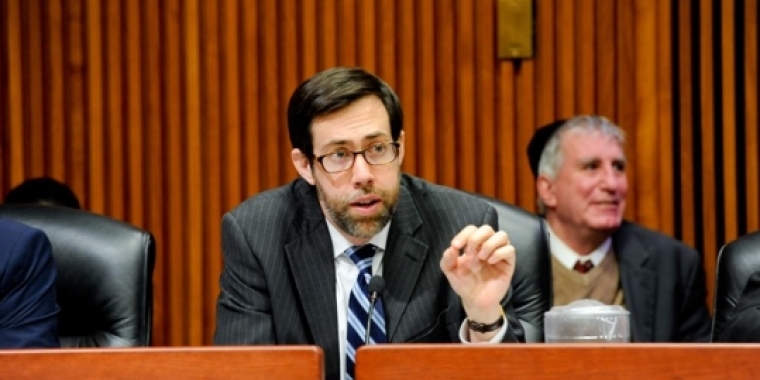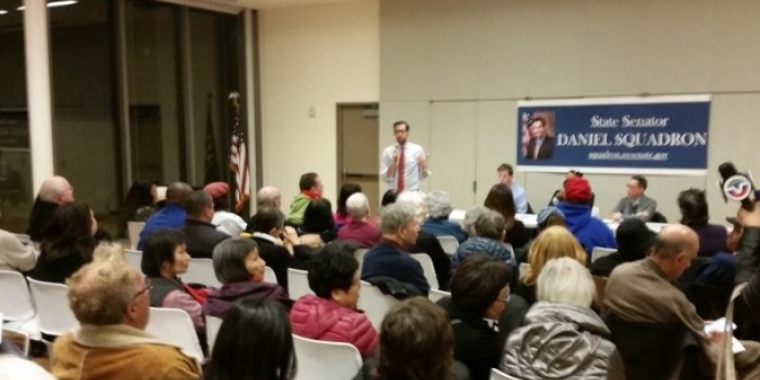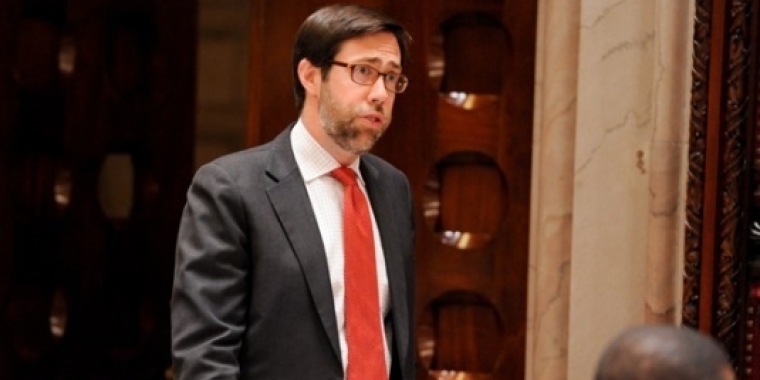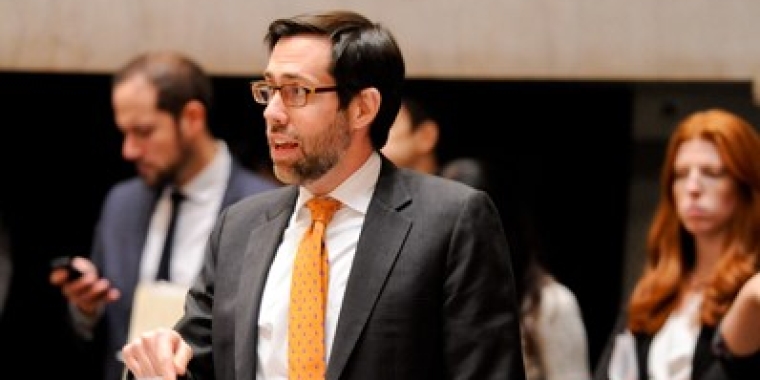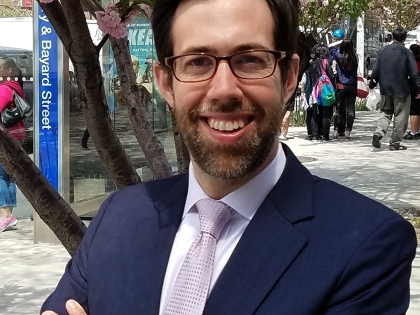
Statement from State Senator Daniel Squadron Regarding the Nomination of the Gowanus Canal to the Environmental Protection Agency’s National Priorities List:
Daniel L. Squadron
May 26, 2009
On April 8, the Environmental Protection Agency (EPA) announced that it had nominated the Gowanus Canal for consideration to be added to the National Priorities List (NPL), more commonly known as the Superfund list. If added to the NPL, the Gowanus would be entered into the EPA's cleanup program, which would include intensive study and analysis of the nature of the hazardous materials and pollutants within the canal, identification of the parties that have been responsible for the pollution, and a supervised cleanup.
Though the pressure to immediately announce a position on this issue was great, this is an enormously complex issue that cannot be decided based on headlines alone; the decisions we make now will have profound, long-ranging consequences for the local community and the effort to clean and revitalize the Gowanus. Given the gravity of such a designation, my staff and I have been working to fully understand the impact that Superfund designation would have for the canal, including the water, the silt and upland portions, and the health and welfare of the community. I investigated sites from around the country, evaluating where a Superfund designation has led to progress and where communities have succeeded with the Superfund Alternative Approach. I met and spoke with the relevant agencies, as well as Gowanus area residents, community organizations and Potentially Responsible Parties (PRPs).
Over the course of these meetings, several parties indicated their belief that the Superfund Alternative Approach (SAA) program, also administered and managed by the EPA, might better achieve a positive outcome. I have concluded that while the SAA has proven to be a useful alternative for sites where there are one or two PRPs, in the case of the Gowanus it is highly unlikely that all of the PRPs will be easily identifiable, or will voluntarily accept responsibility. I also am not convinced that the SAA will guarantee the same transparency, leverage and long-term comprehensive outcomes as the Superfund program. Of course, any scenario, including the SAA, that offered additional federal dollars while meeting the standards of Superfund would be ideal. However, the burden in ensuring that such an alternative would in fact match Superfund's benefits, and bring added value, is high.
For this reason and others, I support listing the Gowanus Canal as a Superfund site. Based on the conversations I have had and the commitments that have been made, I have concluded that listing the Canal on the NPL is the best strategy for achieving a comprehensive and timely cleanup of the canal and the sources of its contamination. Superfund designation would deliver appropriate oversight to the EPA, which has a unique ability to work with other levels of government, PRP's and the community to address a complicated site like the canal.
My support for a Superfund designation depends on several crucial factors.
1) A comprehensive approach to cleaning the Gowanus Canal
As the community has long argued, we must clean the canal and the surrounding area comprehensively--a piecemeal approach simply will not work. The EPA has represented to me and to the community that its focus is first on the silt in the canal bed. As the process moves forward, it is imperative that EPA work with the City, the State, and PRPs to undertake a fully comprehensive cleanup, including the silt, the water and the upland portions of the site. The cleanup must successfully resolve the Combined Sewer Overflow (CSO) problem, essential to the health of the water. And the cleanup must include a concrete plan for addressing issues with the land alongside the canal.
This approach will require careful coordination, led by the EPA, of the various levels of government, each of whom has a role moving forward. The EPA has assured me it will work with the State Department of Environmental Conservation as a partner in addressing the upland portion of the canal cleanup; this agreement must be clarified and formalized as part of designation of the site. The uplands must be a central component of the cleanup effort, and we must move forward with a clear understanding of which agency is responsible for which portion of the job.
Similarly, it is imperative to guarantee that the work the New York City Department of Environmental Protection has undertaken is not jeopardized by a Superfund designation. Upon request, the EPA has indicated to me it believes the City’s investment in a flushing tunnel to address the Combined Sewer Overflow problem meets the City’s obligation as a PRP. The EPA must formalize that understanding with the City during the comment period. This would allow the DEP to move forward with construction of the necessary flushing tunnel and offer community residents tangible relief from persistent CSO pollution.
2) Non-interference with existing efforts to revitalize the community
It is vital that Superfund designation not interfere with existing efforts, like the City’s flushing tunnel, to clean the canal and improve the quality of life in the community. It is critical that the work of the EPA not jeopardize progress that is being made.
At present, the Gowanus area is under consideration for a rezoning, which I support. The Superfund designation must not hold up progress toward comprehensive, responsible development of the corridor alongside the canal.
I am also concerned about the Public Place site, where progress is underway toward a worthy project with affordable housing, open space and public access. I have received assurances from the EPA and from National Grid that a Superfund designation will not impede current plans to remediate the site. National Grid has assured me that it will remediate the uplands regardless of the EPA designation. The EPA has committed to work with DEC to approve the needed barrier along the embankment, without additional delay. As a part of Superfund designation, the EPA should commit to approve the DEC certified barrier plans and construction.
Additionally, the EPA’s focus will stretch beyond the boundaries of the canal itself, as more information is uncovered about sources of pollution emanating from sources outside the canal. The EPA should commit to working with DEC and the City to develop a coordinated plan for the surrounding areas, rather than simply extending the Superfund designation beyond its original boundaries.
3) Transparency and public engagement in the cleanup
The EPA has been accessible to the community since the nomination of the canal to the Superfund list. Moving forward, there must be a formal structure for community engagement, input, oversight and dissemination of information about the cleanup effort. The structure should include elected officials, the local community board, and community organizations from the surrounding area.
Transparency is of particular importance in the Gowanus Canal cleanup because of the dense and vibrant community on the canal’s shores, the toxicity of the materials involved and longstanding concern in the community about potential health hazards associated with the canal. Such concern must be met with full disclosure of information as it is uncovered, so that members of the community are fully informed about the nature of the pollution and plans and timetables for remediation.
Superfund designation has great potential to ensure a long-needed and vital cleanup of the Gowanus Canal. Designation is the right thing to do, but it must be done right. Superfund designation must be paired with a comprehensive approach to cleanup of the silt, water and upland portions, with guarantees in place that the designation will not interfere with existing efforts to clean and revitalize the area. Efforts to clean the Gowanus Canal and the surrounding land have stalled for decades, and will likely take many more years to complete. As the canal moves forward as a Superfund site, I want to ensure that the past delays are not repeated.
Please feel free to contact my Brooklyn Office Director, Ellen Whelan-Wuest, at 718-802-3818 if you have any questions or would like to discuss the matter further.
Share this Article or Press Release
Newsroom
Go to Newsroom